A Senko bait or stick worm is arguably the greatest lure ever made for bass fishing.
These round, fat soft-plastic worms are one of the most versatile baits out there. They have a very simple shape and have no additional features. This bait may seem too simple to the novice angler, but are one of the best bass catching lures on the planet!
Senkos can be fished in nearly any situation and catch any speices of bass anywhere in the country and around the world. No matter where you’re bass fishing, you can never go wrong with a Senko.
In addition, these awesome stick baits can be fished in 6 inches of water or 60 feet of water and anywhere in between. They catch bass in clear water, in muddy water, hot water, cold water and in lakes, deltas, ponds, rivers, and creeks.
1. Best ways to rig a Senko
2. What are the best Senko colors?
3. Selecting the Right Size Senko
4. What Senko Brands Are Best?
5. Best Rod, Reel, and Line for a Senko
4 Best Ways to Rig a Senko
When fishing with Senkos, it’s important to know and understand the many different ways to rig the bait and fish it effectively to maximize you catch rate. Senkos can be Texas rigged, Carolina rigged, wacky rigged, neko rigged, rigged on a shaky head, drop shot, or Ned rig.
That said, living in Florida and primarily targeting largemouth bass, I prefer to rig a Senko one of four ways:
1. Texas Rigged Senko Worm
My favorite way to rig a Senko is Texas style because it can be fished so many different ways:
- I can pitch it into thick brush,
- flip it around docks,
- work it around sparse grass, or
- fish it around offshore structure
I sometimes Texas rig a Senko with a small 1/8-3/8-ounce tungsten sinker for fishing thin vegetation or offshore cover. Other times I’ll fish it with a heavier ½-1-ounce sinker to penetrate through thicker cover.

Lastly, if I want the bait to fall slowly into the strike zone, I like to fish a Senko without any weight at all. Typically, I always use a 4/0 Trokar flipping hook whenever I’m Texas rigging with a Senko.
2. Wacky Rigged Senko Worm
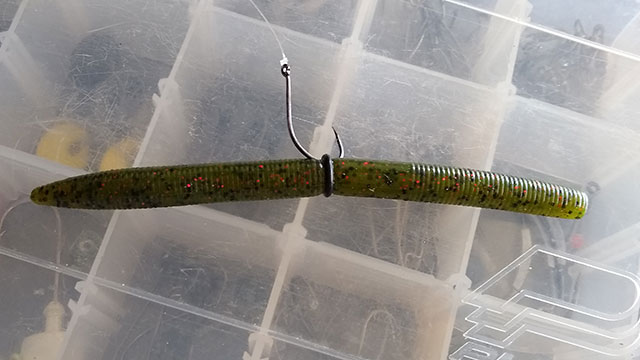
Wacky rigging a Senko is my next favorite way to fish these awesome stick baits.
With this technique, the bait is rigged weightless and is hooked through the middle of the worm. This allows me to skip the light soft-plastic far underneath boat docks and trees overhanging the water.
A wacky rigged Senko has a deadly slow falling action that most bass cannot resist. This technique works great all year long, but is especially good during the spring when bass are moving shallow to spawn.
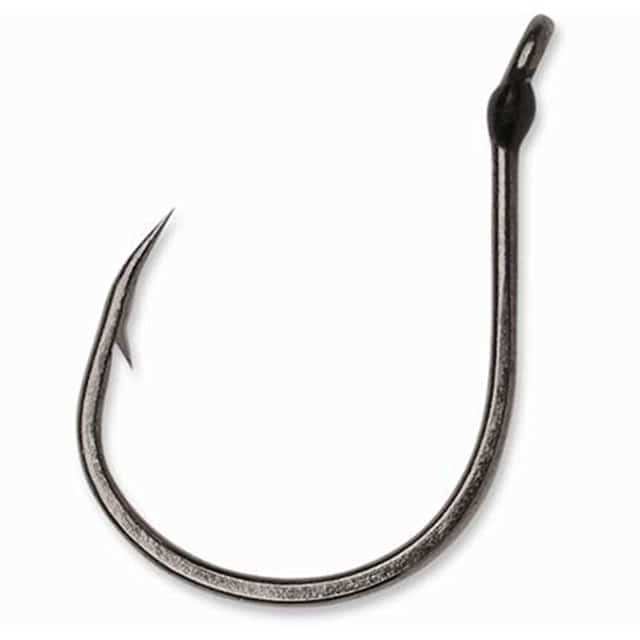
When wacky rigging, I prefer using a 2/0 VMC wacky hook. In addition, I often place a small rubber O-ring over my Senkos. I then slide my hook through the O-ring instead of through the bait itself. This small addition keeps me from going through as many worms.
3. Neko Rigged Senko Bait
Neko rigging a Senko is very similar to wacky rigging it. However, instead of keeping the bait weightless so that it can slowly flutter through the water column, a small nail shaped weight is inserted into the head of the bait.
I use the same VMC wacky hook and a 1/32-ounce VMC nail weight. This allows the lure to fall headfirst and much faster to the bottom.
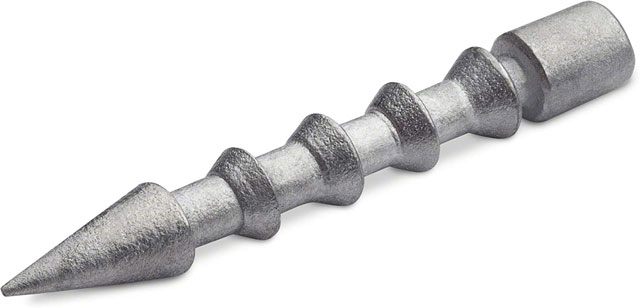
A neko rigged Senko can be fished a little quicker than a wacky rigged Senko and can be hoped off the bottom, giving bass a different look. This technique is great for fishing deeper boat docks or even certain offshore structure.
4. Carolina Rigged Senko WOrm
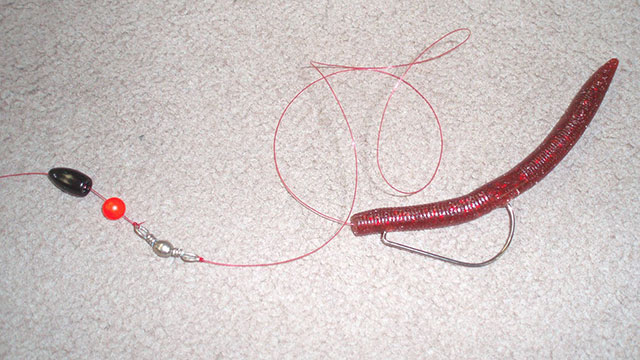
The final way I like to rig a soft-plastic Senko is Carolina rigged.
With this technique, a weight is positioned 14-16 inches above the hook. That weight is designed to drag along the bottom, allowing the bait to glide gently behind it, while remaining off the lake floor.
This tactic is great for fishing slightly deeper water around some type of offshore structure. Brush piles, sand bars, shell beds, and submerged grass are all excellent places to fish a Carolina rigged soft-plastic Senko.
What are the best Senko bait colors?
When fishing with Senkos and any soft plastic baits, I like to stick with three basic color patterns, including watermelon green, green pumpkin, and black/blue. I can catch bass in any fishery with these three colors.
In clear water, I always opt for a green color pattern, because it appears more natural to bass in the clean water environment. Watermelon green is my personal favorite color in any clear water situation.
However, in stained or muddy water, I prefer a black and blue colored Senko. The darker color stands out in the dirty water and provides a larger silhouette, allowing fish to pick up on the bait easier.
If the water is somewhere in between clear and muddy, maybe just a bit stained, I usually start with a green pumpkin colored bait. You can never go wrong with green pumpkin.
Selecting the right size Senko bait
Senkos come in multiple sizes, ranging from 4 to 7 inches in length. Certain sizes work better in different situations.
If you’re fishing a highly pressured body of water, it’s smart to go with a smaller 4 or 5-inch Senko. A smaller senko is also ideal for wacky rigging and skipping under docks and overhanging trees. These smaller baits are lighter and work best when fished on spinning tackle.
A larger Senko is a better choice when Texas rigging and flipping the bait into and around brush or vegetation. Whether rigged with a weight or weightless, a 6- or 7-inch Texas rigged Senko is hard to beat when fishing thick cover. Large Senkos also excel in stained fisheries. They provide a larger profile and stand out in murky water.
What Senko lure brands are best?
There are tons of soft-plastic stick bait brands to choose from. It can be overwhelming and difficult to figure out which ones are best. There are three brands that I typically prefer using:
- Gary Yamamoto Custom Baits Senko
- X-Zone Lures True Center Stick
- Yum Dinger
Gary Yamamoto Custom Baits Senko
The original Senko, made my Gary Yamamoto Custom Baits is one of the best stick worms on the market. This bait has excellent falling action when rigged weightless and just flat out catches fish.
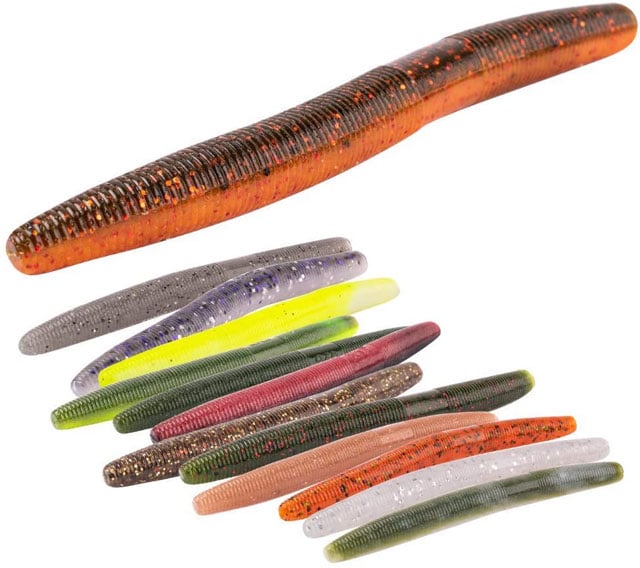
However, there are some downsides to Yamamoto Senkos. A single pack of these baits is a little on the expensive side. Not to mention, the worms are extremely delicate and rip easily. Anglers are lucky to catch more than one fish per bait. Nonetheless, Yamamoto Senkos are super effective and catch a lot of bass.
X-Zone Lures True Center Stick
Another one of my favorite Senko style baits is made by X-Zone Lures. They make a bait called the True Center Stick. It also has great action when rigged weightless, as it slowly shimmies to the water column. The X-Zone Lures stick bait is a little less expensive than the Yamamoto Senko. However, similar to the Yamamoto Senko, the True Center Stick is very fragile and doesn’t hold up to more than one or two bites.
Both the Yamamoto and X-Zone Lures Senko have high quantities of salt, which allows these baits to sink much faster than a bait with little to no salt. I prefer to use these two baits for wacky rigging because they fall into the strike zone quicker and look more natural when fluttering to the bottom.
Yum Dinger
The final stick bait I like using is the Yum Dinger. This is one of the least expensive Senko style baits on the market, however, it is very durable and holds up much better than my other two choices.
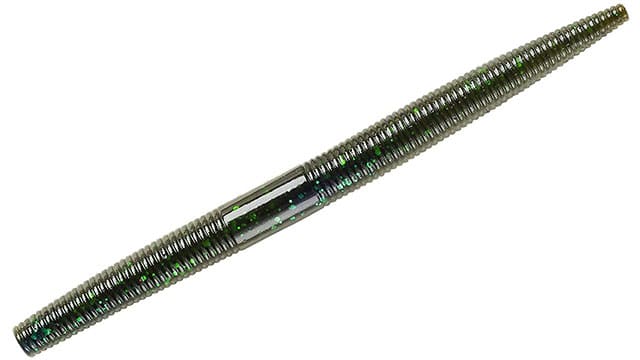
The Yum Dinger does not have a high salt content and, in turn, doesn’t sink nearly as fast as the Yamamoto or X-Zone Lures stick worms. Therefore, I prefer to use this bait especially when Carolina rigging, because it doesn’t sink as fast and remains off the bottom for longer periods of time. This allows for a more natural look when Carolina rigging.
Best rod, reel, and line for fishing a Senko bait
When using a Senko, I employ both spinning and baitcasting gear, depending on how I’m fishing the bait. If I’m Texas or Carolina rigging the soft-plastic lure, I’ll usually be fishing around some sort of thick cover. Therefore, I need a rod that can help me get those fish away from structure quickly and effectively.
I’ll use a 7’ to 7’6” medium heavy baitcasting rod paired to a reel with a 7:1:1 gear ratio. I’ll spool that reel with 40-50 pound braided line and tie a 15-20 pound leader to my braid. If I’m flipping heavy shoreline cover with a Texas rigged Senko, I’ll go with a heavier leader. However, if I’m fishing an offshore sandbar or brush pile, I’ll opt for a slightly lighter leader.
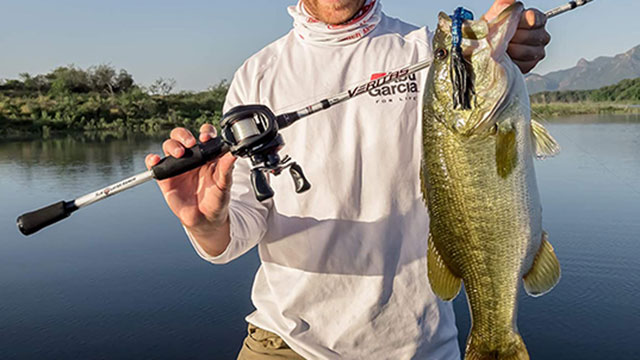
Click here to see my favorite baitcasting combo when fishing Senkos.
When I’m not Texas or Carolina rigging a Senko, I’ll likely be fishing the bait wacky or neko style. With these two techniques, I always use spinning tackle. I prefer a 7’ medium action spinning rod paired to a reel with a 7:1:1 gear ratio. I spool that reel with 20-pound braided line and tie a 14-17 pound fluorocarbon leader to my braid. The lighter gear allows me to easily skip the bait underneath structure, such as boat docks and overhanging trees.
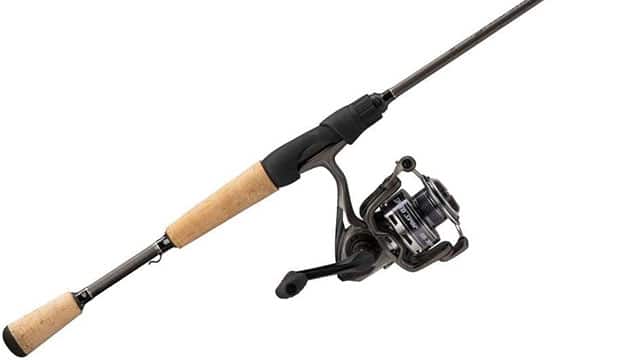
Click here to see my favorite spinning combo when fishing Senkos.
Final thoughts
Try to remember these tips the next time you hit the water to target any species of bass. Keep in mind, my favorite ways to fish Senkos are geared move toward largemouth bass fishing. These tactics still work great for other bass species as well, such as smallmouth and spotted bass. However, there are times when a Senko should be rigged other ways in order to catch those species as well.
If you don’t already employ Senkos when bass fishing, you certainly need to add them to your arsenal. Or if you’re new to bass fishing, a Senko is a great bait to learn how to bass fish with. It’s a very easy bait to fish and does most of the work for you. So give it a try on your next outing!!
Remember, Senkos are extremely versatile and can be fished many ways. Use them to your advantage to put more bass in your boat!
Be sure to check out our YouTube video where I explain in detail the different ways to rig and fish soft-plastic Senkos.
As always, happy fishing and keep your hooks wet!
